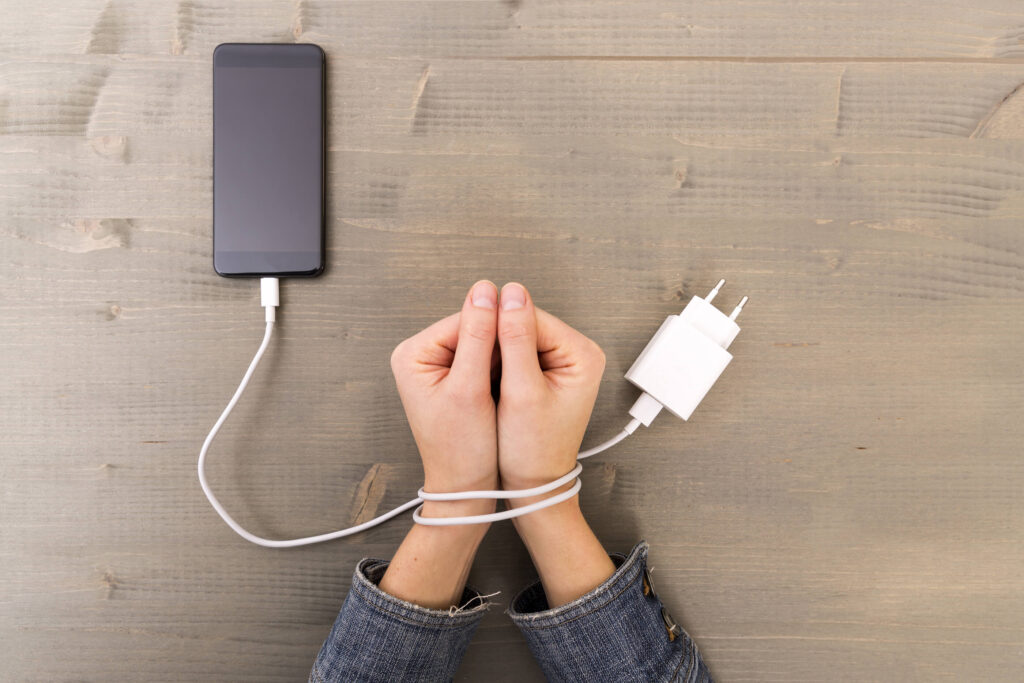
Smartphones have revolutionized modern life, offering convenience, connectivity, and a gateway to boundless information. Yet, their widespread use has given rise to a growing issue: smartphone addiction. This dependency impacts mental health, disrupts relationships, and diminishes productivity. Breaking free from the grip of smartphone addiction is essential for achieving a healthier, more balanced relationship with technology.
Understanding Smartphone Addiction
Smartphone addiction, often referred to as “nomophobia” (fear of being without a mobile phone), is a behavioral dependency characterized by excessive and compulsive phone use. Features like social media, gaming apps, and endless scrolling are intentionally designed to capture attention and keep users engaged. Notifications, likes, and shares activate the brain’s reward system, releasing dopamine and reinforcing the habit. Over time, this cycle fosters dependence, making it increasingly difficult for users to disconnect.
The prevalence of smartphone addiction is startling. Studies suggest that the average person spends 3–4 hours daily on their phone, with many exceeding this figure. For younger generations, the numbers are even higher, as smartphones dominate both their social and academic lives.
The Impact of Smartphone Addiction
Mental Health Consequences
Excessive phone use is closely linked to mental health issues such as anxiety, depression, and low self-esteem. Social media platforms often perpetuate feelings of inadequacy, as users compare their lives to the curated, idealized images they see online. This “highlight reel effect” can erode self-confidence and exacerbate feelings of loneliness.
Additionally, the constant stimulation from smartphones contributes to stress and cognitive overload. Notifications, messages, and updates disrupt focus and make it difficult to concentrate, leading to mental fatigue.
Relationship Strain
Smartphone addiction also takes a toll on relationships. The phenomenon of “phubbing” (ignoring someone in favor of a phone) is a common source of tension among friends, family, and romantic partners. When people prioritize their devices over face-to-face interactions, it can create feelings of neglect and disconnect.
Productivity Decline
Smartphones are a significant source of distraction in the workplace and educational settings. The allure of quick social media checks or browsing sessions interrupts workflow and reduces efficiency. Studies show that frequent multitasking involving smartphones diminishes cognitive performance and impairs the ability to focus on demanding tasks.
Strategies to Address Smartphone Addiction
Breaking the chains of smartphone addiction requires conscious effort and a commitment to change. Here are some practical steps to regain control:
- Set Boundaries: Establish designated phone-free times, such as during meals, family gatherings, or before bedtime. Creating these boundaries encourages meaningful interactions and promotes healthier habits.
- Use Monitoring Tools: Many smartphones offer built-in features to track screen time. Apps like Screen Time (iOS) or Digital Wellbeing (Android) can help users identify patterns and set limits on app usage.
- Digital Detoxes: Periodic breaks from technology allow users to reset their relationship with their devices. Whether for a day or a week, unplugging helps cultivate mindfulness and reduces dependency.
- Replace Screen Time with Offline Activities: Engaging in hobbies, exercise, or outdoor activities can provide fulfilling alternatives to excessive phone use.
- Seek Support: Joining support groups or engaging with mental health professionals can provide guidance and accountability for those struggling to break free.
Conclusion
Smartphone addiction is a widespread problem with significant implications for mental health, relationships, and productivity. However, it is possible to break the digital chains by adopting intentional practices and setting boundaries. By recognizing the impact of excessive phone use and taking proactive steps to address it, we can foster healthier connections—with technology, ourselves, and the people around us.